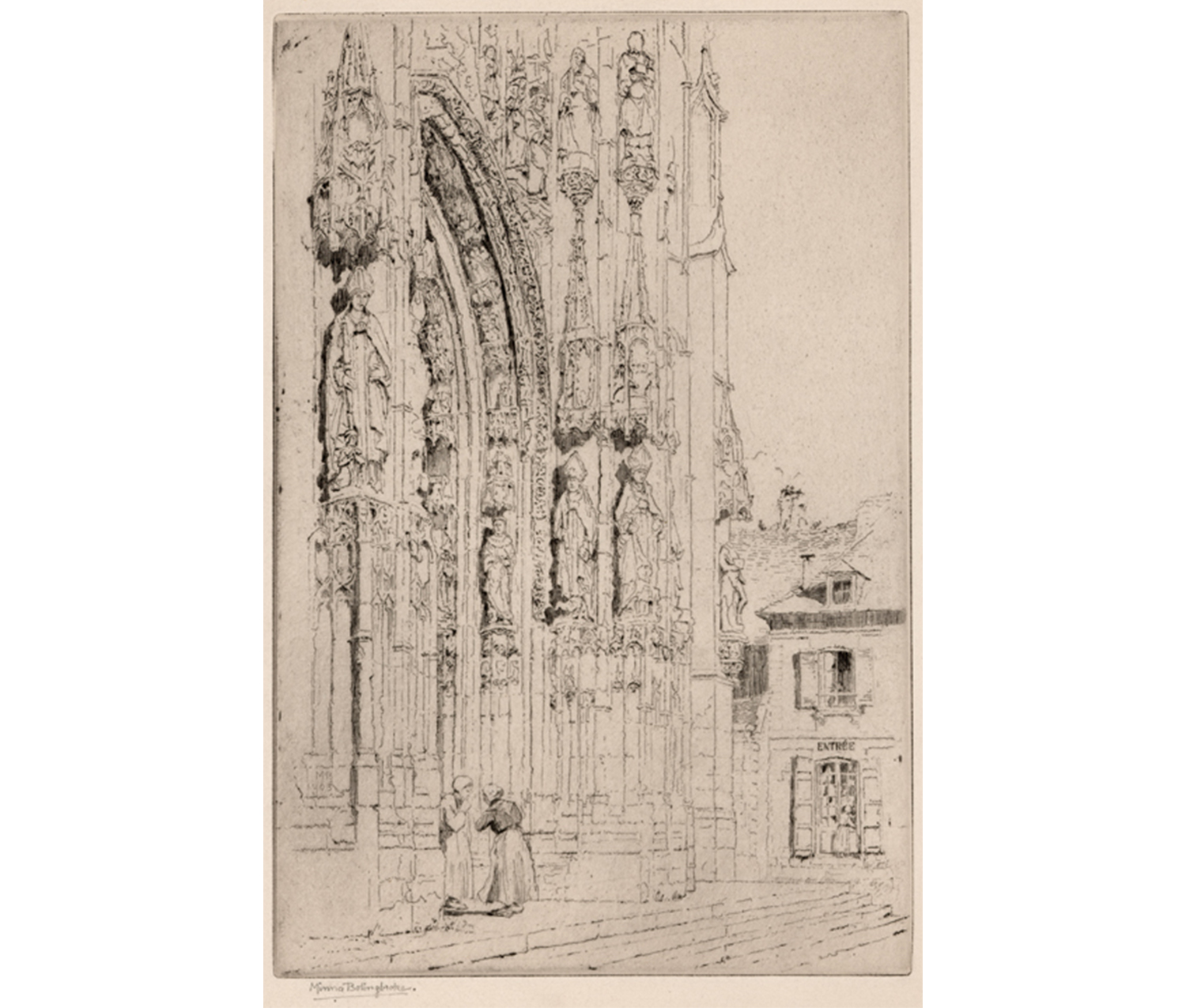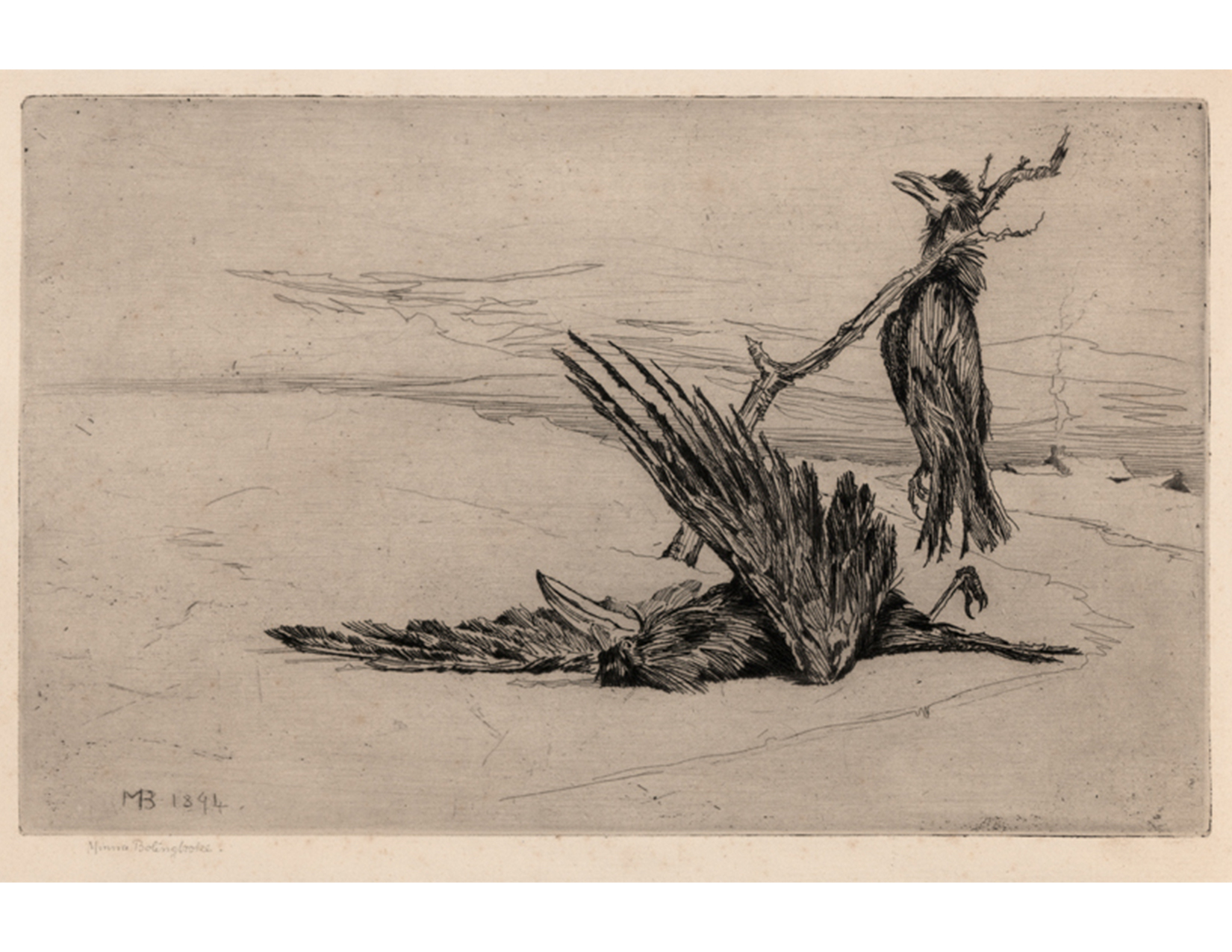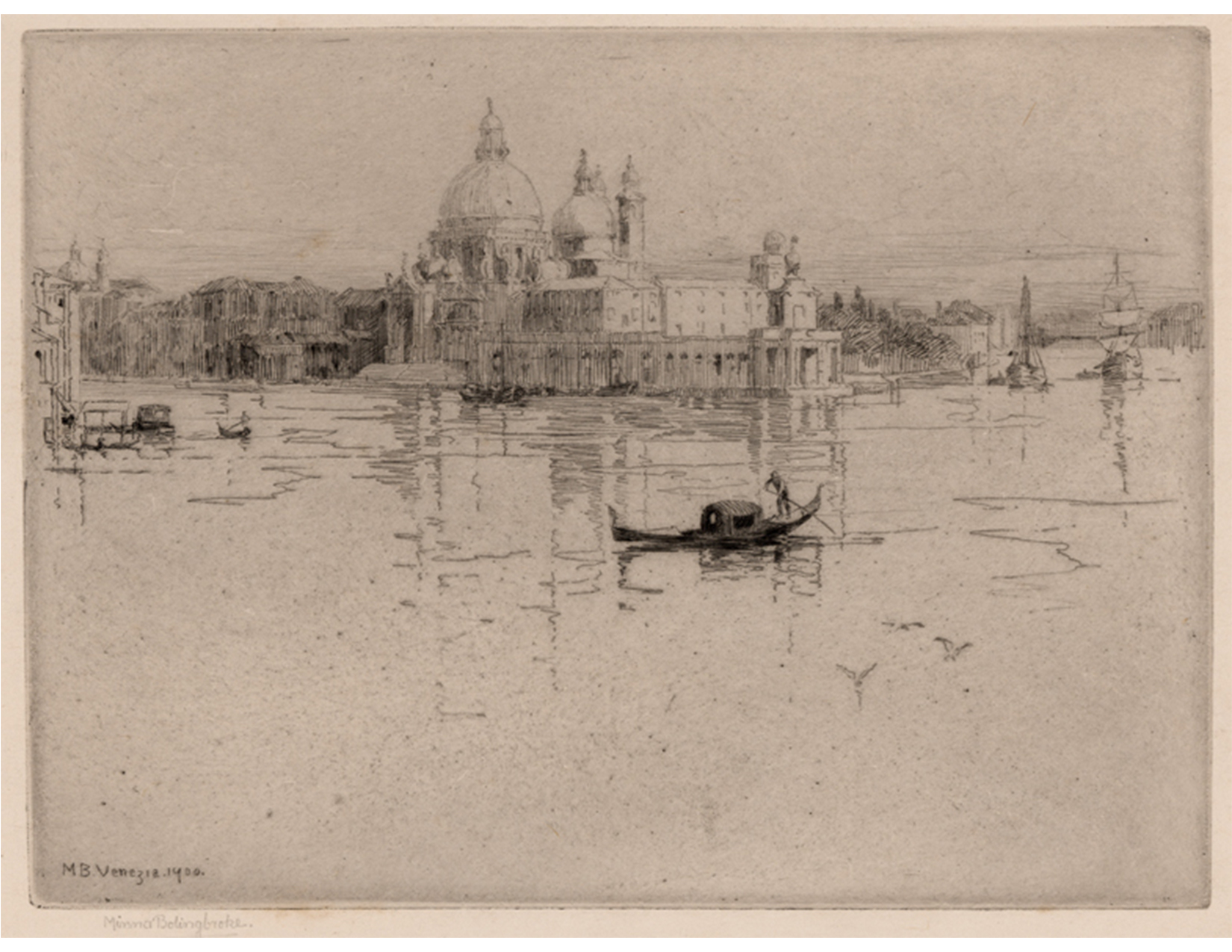
Etched in Memory: A Cataloguer's Perspective
Guest blogger Brittany Rubin graduated with an MA in Art History from the University of Massachusetts and was the 2014-2015 cataloguing intern for the Gladys Engel Lang and Kurt Lang Collection.
This piece discusses works from The Gladys Engel Lang and Kurt Lang Collection, a significant collection of prints donated to the Museum.
During my first day at the Cunningham Center, I was handed a lengthy spreadsheet documenting the Gladys Engel Lang and Kurt Lang Collection’s contents. I had been hired to catalogue and research the collection, a compilation of 1400 prints and drawings heavily focused on the 19th Century Etching Revival, and was eager to discover the myriad of artists and impressions that would be arriving in the next few weeks. I scanned the list immediately, picking out a few familiar names. The usual suspects of 19th Century printmaking were all represented; I could immediately find Pissarro, Whistler, and Goya in my game of artistic Where’s Waldo. Yet, the spreadsheet also listed many artists, primarily female, whose names I had never heard before. Who were Minna Bolingbroke and Bertha E. Jaques? Why was I unfamiliar with their artistic output?

Minna Bolingbroke. English, 1857–1939. Saints and Bishops Carved in Stone, nd. Etching printed in black on medium weight, slightly textured, cream-colored paper. The Gladys Engel Lang and Kurt Lang Collection. Promised Gift. SC 2016.61.57.
Drs. Gladys Engel Lang and Kurt Lang, professors emeriti of sociology at the University of Washington, drew upon their personal collection of works on paper to explore larger questions of artistic reputation and collective memory. Their book, Etched in Memory: the Building and Survival of Artistic Reputation, is a sociological study of why certain artists maintain critical acclaim and notoriety, while others fade into relative obscurity. Their study examines a myriad of hypothetical factors that contribute to an artist’s “reputation building,” including socioeconomic status, education, family background, and-most intriguing to me-gender. In fact, the Langs devote an entire chapter of their study to examining “The Disappearing Lady Etchers,” and the circumstances that led to their unfortunate relegation as a minor figure in the printmaking world.

Minna Bolingbroke. English, 1857–1939. Marauders, 1894. Etching printed in black on medium weight, slightly textured, cream colored paper. The Gladys Engel Lang and Kurt Lang Collection. Promised Gift. SC 2016.61.59.
Bolingbroke is a perfect encapsulation of the Langs’ “Disappearing Lady Etchers.” Bolingbroke’s works, like 1894’s Mauraders (above), render landscapes, street scenes, and animals with eerie foreboding. Although her etchings have been acquired by the Victoria and Albert Museum and the British Museum, the Langs hypothesize that her lack of self-promotion in later years coupled with her death on the eve of World War Two led to her present relative obscurity. When her work is studied, it is often deemed derivative of the etchings of Charles Watson, her teacher and, later, husband. To date, little scholarly attention has been given to Bolingbroke’s enigmatic oeuvres.

Minna Bolingbroke. English, 1857–1939. From Out the Waves Her Structures Rise (Venice), 1902. Etching printed in black on medium weight, slightly textured, beige paper. The Gladys Engel Lang and Kurt Lang Collection. Promised Gift. SC 2016.61.58.
The SCMA is extremely excited to receive the Langs’ personal collection of works on paper. Indeed, the collection contains many works that have been tragically overlooked by scholars. We hope that the coming generations of Smith students and SCMA visitors can build on the Langs’ sociological theories with further studies of these “disappearing” artists. Our visitors can help to build and maintain the artistic reputations of Bolingbroke and her colleagues, and overturn the course of history by preserving their memories as significant members of the 19th Century Etching Revival.